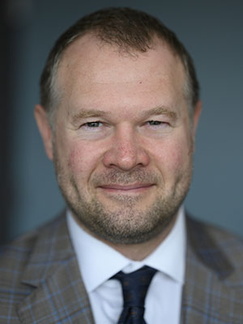
U of M ahead of the nation in Orofacial Pain specialty, holds Pain Summit for researchers

Donald Nixdorf (pictured at left), DDS, MS, of the U of M’s Department of Diagnostic and Biological Sciences, has spent his entire career deepening his understanding of pain. As Director of the Division of Temporomandibular Joint Disorder (TMD) and Orofacial Pain, he shares that understanding with his patients and the next generation of dental practitioners. Dr. Nixdorf also partners with neurosurgeons Andrew Grande, MD; and David Darrow, MD MPH, in their work to treat patients with intensely painful neurological conditions such as trigeminal neuralgia. He shared some thoughts about that work and how dentistry is dealing with the notion of pain in a recent interview.
Orofacial pain became a recognized specialty in dentistry this year. Why is that important?
A recent report from the National Academies of Sciences, Engineering, and Medicine focused on TMD. The writers polled experts from around the world and did a state-of-the-art assessment of the overall pain management field. The report noted that governments and healthcare organizations haven’t put enough emphasis on pain management. It also noted that other healthcare providers don’t typically work with dentistry in this area; therefore, skills and knowledge aren’t being translated. The report helped push the American Dental Association [ADA] to approve the Orofacial Pain specialty status in March 2020. In addition, the ADA changed some of its requirements to include TMD in the general curricula – every dentist must learn about it before they graduate.
What is orofacial pain?
It’s the specialty of dentistry that encompasses the diagnosis, management, and treatment of pain disorders of the jaw, mouth, face, and associated regions.
Where does the U of M stand regarding orofacial pain?
There are 12 accredited programs in this country and the U of M is one of them. The University of Minnesota is actually a legacy program that started in 1983. We went through credentialing in 2013, which is when we became accredited.
How does having an Orofacial Pain specialty help dentistry as a whole?
The specialty will become more visible, more well known in dentistry. Dentists will seek education about it, which will result in a slow increase in the quality and quantity of dentistry program applicants. We’re building recognition of the Orofacial Pain specialty and have a handful of dentists in the state licensed as specialists. That puts us far ahead of the national curve.
What kind of patients would see an Orofacial Pain specialist?
We see patients who are experiencing jaw pain and face pain, which is commonly associated with muscles, temporomandibular joints, and nerves in this region. We are also diagnosticians of these complaints. If your dentist or physician can’t figure out your source of oral or facial pain, they should send their patients to an Orofacial Pain specialist. Those referrals often result in us working with several types of care providers — such as neurosurgeons — depending on our patients' needs.
The U recently held a virtual Pain Summit. Who was that for? What was the goal?
The U has been exceptionally rich in neuroscience research, and we are facing the scenario that several of our world-renowned researchers are now transitioning into retirement. Some of us felt it would be good to get everyone who works in pain management research together to introduce themselves and potentially form additional collaborations. I worked with Dr. Grande and Dr. Darrow from Neurosurgery; and Dr. Scott Thompson and Dr. Laura Stone from the Department of Anesthesia to organize the event. U of M faculty from various disciplines with research interests in pain were invited. We had about 50 people representing all campuses join us throughout the two-day event. We clearly have a vibrant pain management community at the University and hope to make the Summit an annual event. Our long-term goal is to further develop the visibility and notoriety of pain-related research on campus.
#PainAwarenessMonth



